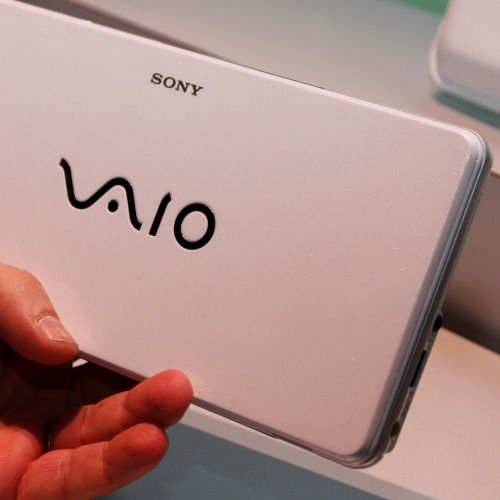Sony has finally entered the crowded netbook arena, but on close inspection while the Sony Vaio P-Series laptop might be small, it's anything but a netbook. Is this the Vaio to own? We had a brief play with the new model at this year's CES in Las Vegas to find out.
Our quick take
Forgetting the price for a brief moment, Sony has created a netbook that is anything but. The impressive screen, almost full-sized keyboard and sheer miniature size and weight will impress anyone that you show and for those on the go gives you a laptop that works, and works well.
That extra width also helps when it comes to typing on your lap as it's wide enough to bridge your legs without you having to push them closer than is normally comfortable - if you've tried an Eee PC you'll know what we are talking about.
The catch then? The Vaio P-series might sport a netbook-friendly Intel Atom processor, but the price certainly wouldn't suggest it. $900 in the US somehow translates to £825 in the UK (rather than £600) with the top of the range model available on Sony's own Sony Style website coming in at £1345.
It seems Sony is reaffirming that whilst nice things come in small packages, those nice things are nearly always expensive.
The Vaio range will be available in the UK, France, Germany, Italy, Spain and Russia from February 2009.

Sony Vaio P-series laptop - First Look
| FOR | AGAINST |
|---|---|
|
|
Small, thin and light are the first words you are likely to utter when you see the new Vaio up close and personal. It's small because it only comes with an 8-inch widescreen display, it's thin because there is no optical drive or trackpad, and it's light because there's hardly anything to it.
Made from plastic rather than metal, the Sony Vaio P-series will come in red, emerald green, onyx black, white and classic black. The design, which is glossy rather than matt, looks more like a women's clutch bag or document wallet than a state-of-the-art laptop and it's certainly going to be something that's easy to slip into a bag. Think half the depth, but the same width of a standard laptop and you are on the right lines.
The use of plastic for the case and the lack of an optical drive mean the P-series is incredibly light - 640g in fact - and it, along with the size, makes for a compelling purchase for those tired of lugging a heavy laptop around just to stay in touch with the office.
On the downside, that thin and light design means the laptop is fairly flimsy with plenty of bend to it. I wouldn't want to sit on it by mistake - it might snap. That thinness is down to the choice of screen. Here you get a LED powered 8-inch 16:9 ratio X-Black LCD widescreen offering that delivers an impressive 1600 x 768 resolution so you can see plenty on your desktop.
Because of the widescreen ratio, Sony has been able to fit a keyboard that is virtually full size and this makes for an easier typing experience. Keys are responsive, easy to use, and well spaced.
The downside to a thin display is that you lose that space where you normally find the trackpad, i.e., below the keys. Instead you get a nipple tucked between the G, H and B keys. While we are sure you will get used to using the small rubber ball, we found it difficult to use on our first go. It's a case of learning the force needed to zip across the screen without going too far. If you're not planning on getting annoyed we would recommend new owners buy a travel mouse immediately and never leave home without it.
On the connectivity front it's business as usual with the usual array of Wi-Fi, Bluetooth and GPS connectivity all included. You'll also get 3G connectivity so you can slip in a 3G sim and ditch the mobile broadband dongle. Elsewhere you get a built-in webcam for video calling and the option to install a 128GB Solid State Drive to improve storage and battery performance.
Powered by a 1.6GHz Intel Atom chip rather than something considerably more powerful, it's a surprise to find Windows Vista running rather than Windows XP. The unit we tested, clean of apps like Photoshop, was fast and responsive and no doubt will improve even more once Windows 7 with its more optimised code is installed on it. However we wouldn't expect to play games on it or do heavy image or video editing.
Like HP's range of laptops that allow you to gain access to the DVD player without booting Vista, Sony has allowed at the press of a dedicated button, positioned next to the mouse click buttons, to access music, video, images and the web via it's Xross Media Bar interface.
Turning your laptop into an entertainment device rather than just a Word-touting netbook, PS3 or PSP users will be familiar with how the system works. In our play it worked well and was easy to understand. You won't have any problems with it.
To recap
It seems Sony is reaffirming that whilst nice things come in small packages, those nice things are nearly always expensive
